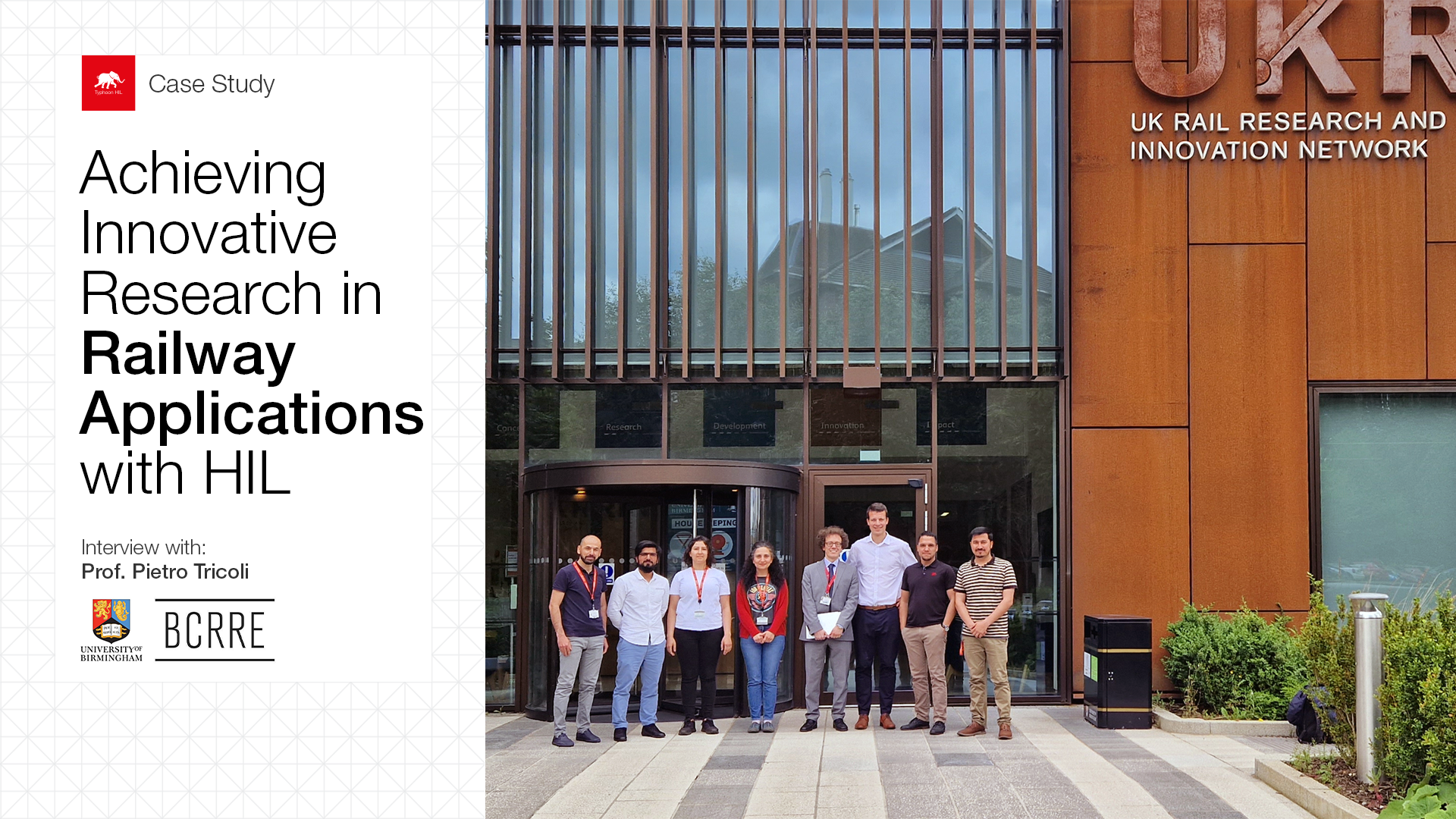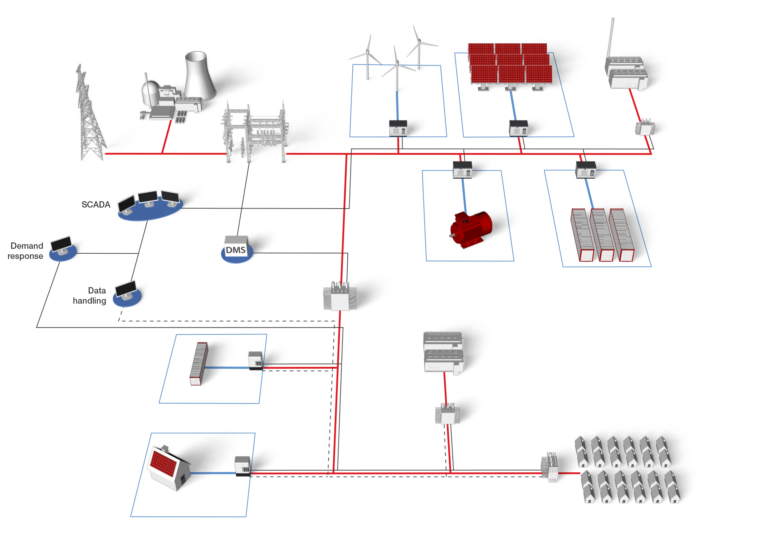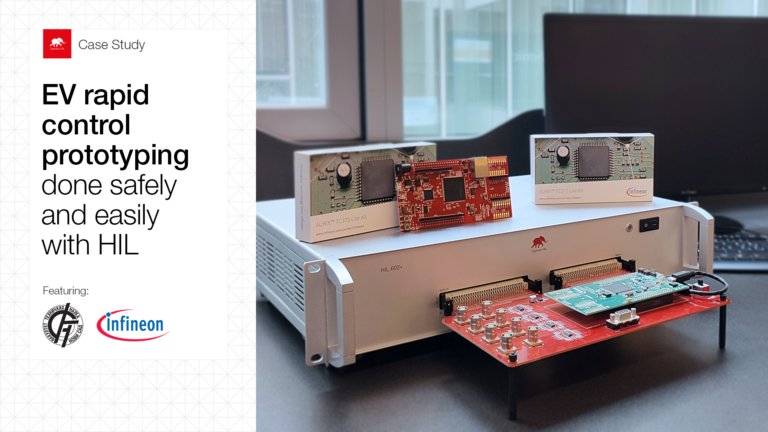Introduction
Professor Pietro Tricoli is the Head of the Power Electronics Group at the Birmingham Centre for Railway Research and Education (BCRRE)with an extensive experience in power hardware-in-the-loop and control hardware-in-the-loop development and testing with Typhoon HIL solutions, as well as research collaboration with Typhoon HIL engineers. In this blog article, we are sharing insights into his career, groundbreaking research in power electronics, as well as teaching practices.
Research Background
In a distinguished career spanning over a decade, Prof. Tricoli’s research focuses on diverse applications of power electronics, from renewable power generation to transport systems. His expertise includes electric vehicles, trains, railway traction supply, and electrification systems for AC and DC railways, with a recent emphasis on electric vessels and energy storage integration.
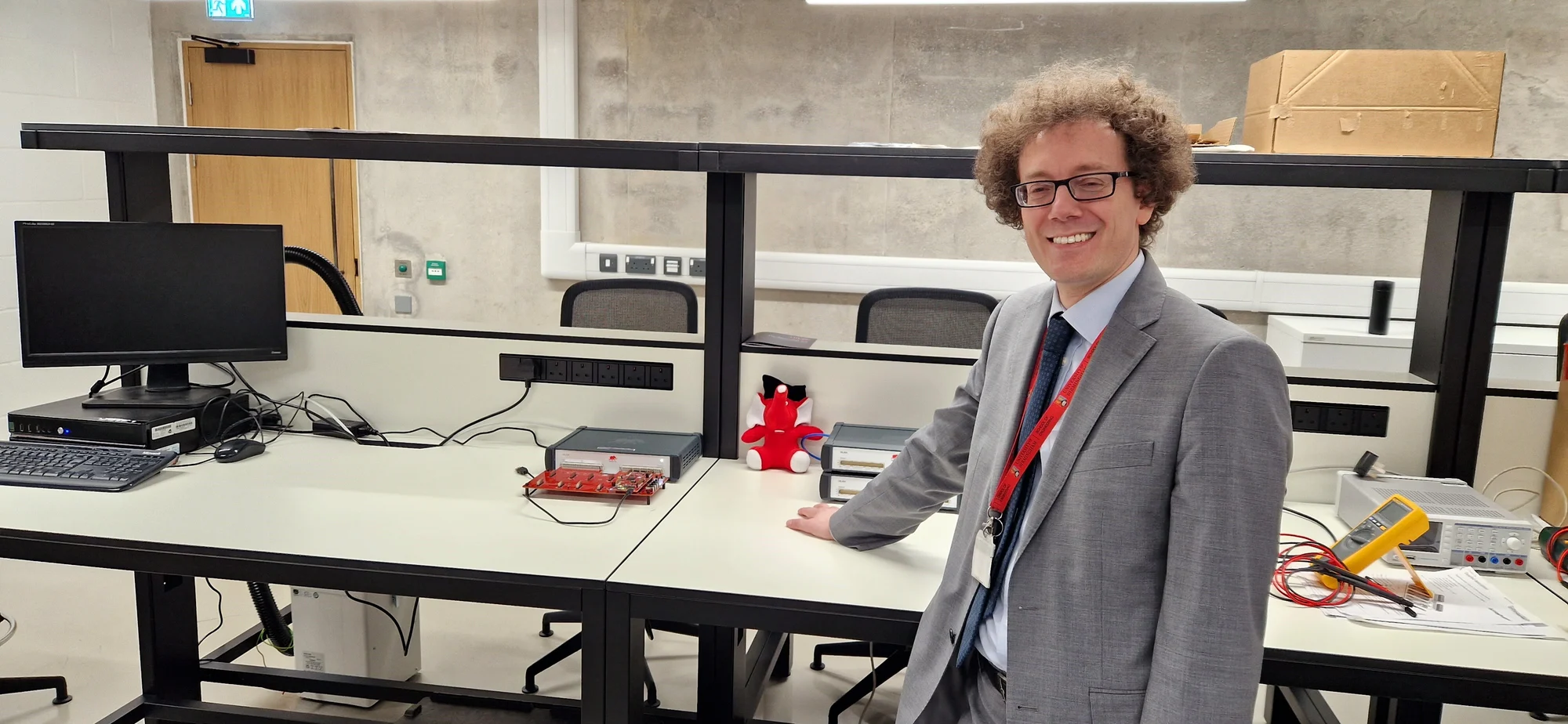
Research Facilities
On the photos, you can see Prof. Tricoli’s Power Electronics group’s lab in the dedicated railway building and lab facilities that are part of the UK Rail Research and Innovation Network (UKRRIN), a network of centers of excellence that revolutionize innovation in rail. The lab allows for experimental validations crucial in applied research, emphasizing the importance of proving theoretical findings in real or high-fidelity simulated environments.
In applied research, you must prove that the theoretical findings can work in real or realistic simulated environment – like the one that the hardware-in-the-loop approach is offering.
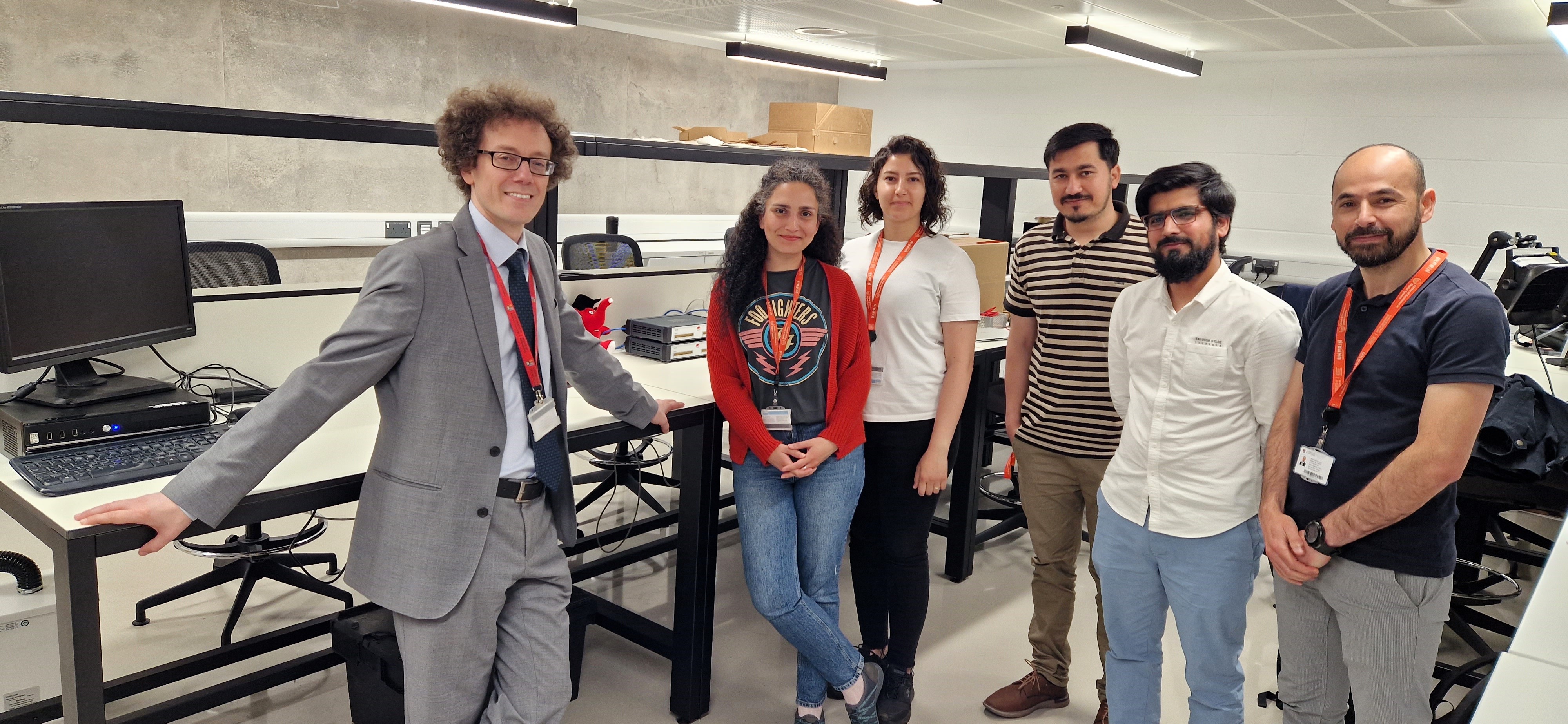
Teaching Fundamental Knowledge and Confidence
When asked about the key things Prof. Tricoli thinks students pursuing research in power electronics should learn in his classes, he underscores the importance of fundamental skills, including a solid background in mathematical and physical sciences. Passion and interest, especially in experimental work, are crucial, because research involves long hours spent in the lab – therefore this research work is best suited for those who will enjoy it. Another key for career success in research is resilience in the face of setbacks. Those who can overcome challenges will in time produce innovative results for the academic community, but industry as well.
To be successful, students need to believe in themselves – and HIL helps them build confidence in their work.
Industry-Academia Collaboration and Knowledge Transfer
Prof. Tricoli has a longstanding collaboration with Typhoon HIL, that started with Typhoon’s visit to the university years ago. From the start, the integration of Hardware-in-the-Loop (HIL) solutions into their lab’s research was an attractive possibility, as it would enable faster development and safer testing compared to a power-HIL lab. The collaboration started with one HIL404 real-time simulation device and has grown significantly since. One of the key benefits of this partnership involved the development of new blocks to enhance the already extensive component library. This collaboration showcased the impact research in applicative sciences can have on reaching industry goals through technology innovation and knowledge transfer.
By collaborating with Typhoon HIL, our work can have stronger impact for the industry.
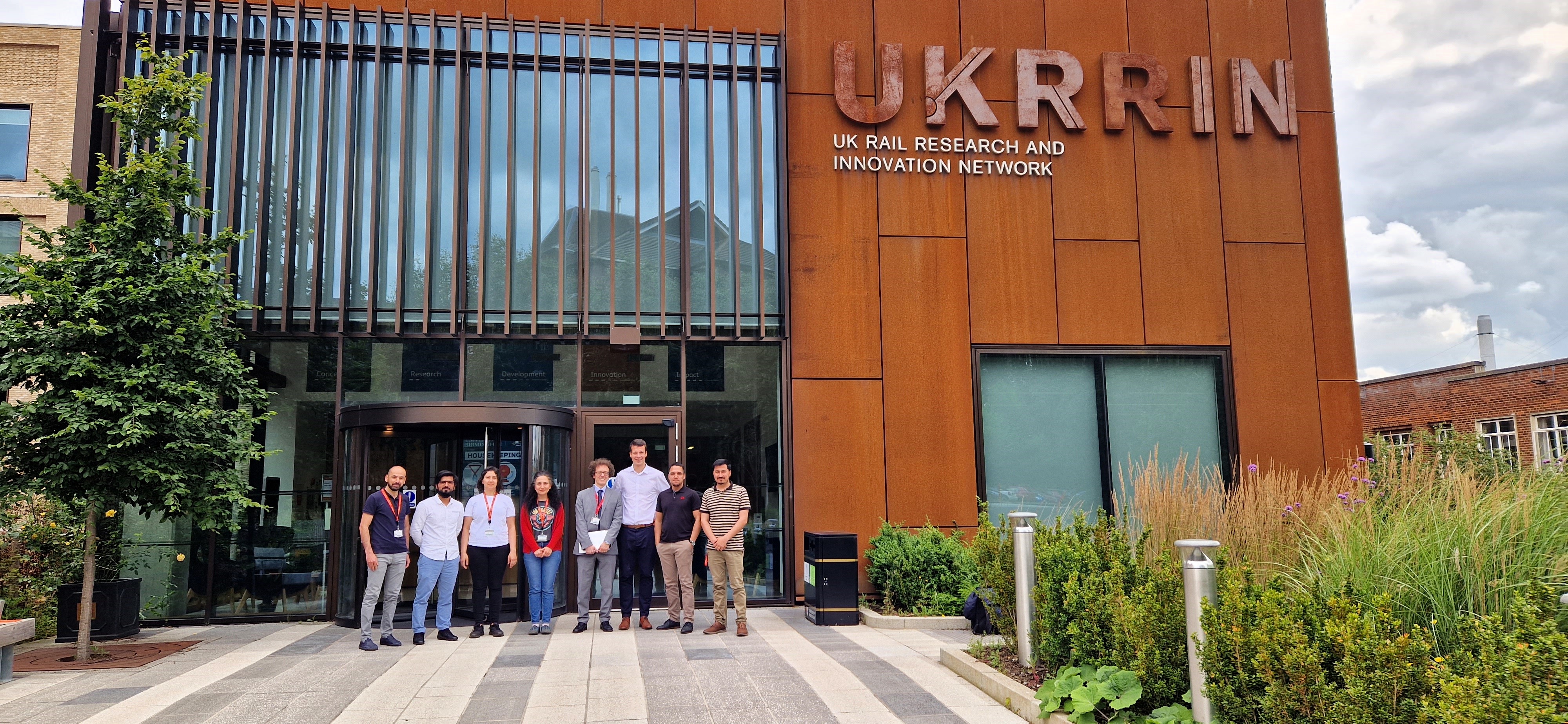
The models in the component library saved us a lot of development time. Our PhD students could focus on the power electronics control aspect only, while all the basic blocks, like the fuel cell and the battery, were already available in the component library.
Benefits of HIL in Teaching and Research
While HIL is not currently used at the undergraduate level, Prof. Tricoli envisions its future integration through introducing students to Virtual HIL first. This would enable them to gain skills and confidence at the right pace. For postgraduate and PhD students, HIL solutions have already proved themselves invaluable in raising confidence with microcontrollers, streamlining the development process, and allowing a focus on the most original aspects of control systems, as the main power electronic blocks are already available in the Typhoon HIL Schematic Editor component library for a fast model build.
By reducing development time, we can focus on the novel bits of our research and provide greater added value for the research community.
e-Learning at HIL Academy
Over ten postgraduate students and staff members from Prof. Tricoli’s lab have finished HIL Academy courses or specializations and gained certificates for their knowledge. While the complexity of certain coursework may limit undergraduate involvement, Prof. Tricoli recognizes the platform’s utility for MSc and PhD students who can dedicate more time and possess foundational knowledge.
The biggest benefit of HIL for PhD students is that they can perform experiments on the controller side with a significantly shorter time to reaching original and innovative results.
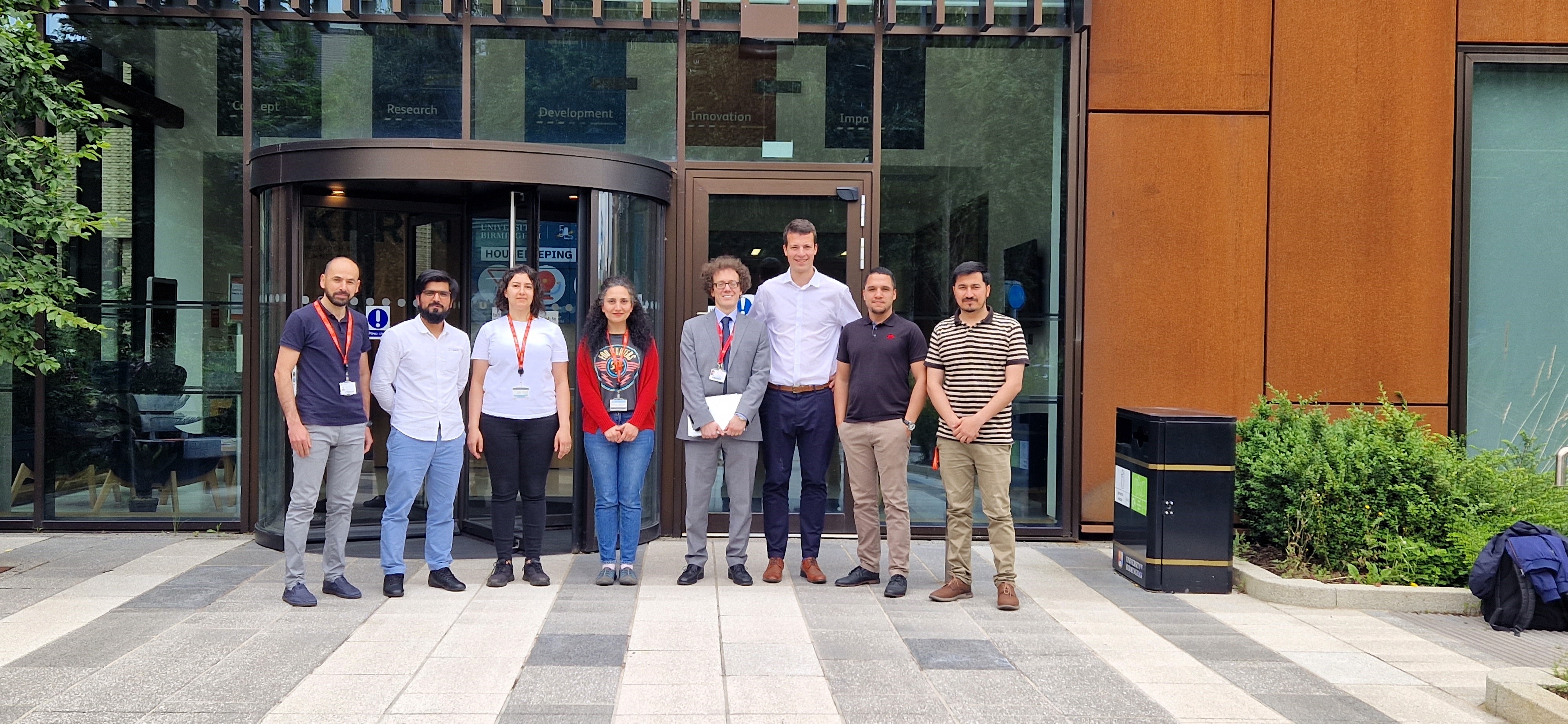
How would you describe HIL in one word?
For me, HIL in one word is effective.
Credits
Interviewer | Vuk Maletin
Author | Debora Santo
Visuals | Karl Mickei
Editor | Debora Santo
